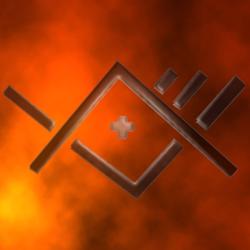“In metric, one milliliter of water occupies one cubic centimeter, weighs one gram, and requires one calorie of energy to heat up by one degree centigrade—which is 1 percent of the difference between its freezing point and its boiling point. An amount of hydrogen weighing the same amount has exactly one mole of atoms in it. Whereas in the American system, the answer to ‘How much energy does it take to boil a room-temperature gallon of water?’ is ‘Go fuck yourself,’ because you can’t directly relate any of those quantities.” ― Josh Bazell, Wild Thing
It might be funny if it were true, but it’s just a sad show of ignorance. It is exactly as possible in one as in the other for obvious reasons. It’s just not as easy to memorize.
To be specific:
- energy required to heat to boiling point 1180 kJ
- energy required to convert to vapor 8420 kJ
- energy required to heat to boiling point and convert to vapor 9600 kJ
Nobody said impossible, just that you can’t directly relate any of those quantities.
Can’t we just agree that metric is superior?
But they are just as directly related.
Ok, so rewrite the statement using imperial instead. Let’s compare them.
“High. You put the stove on high.”
I’m always disappointed that megameter isn’t a common word. People will say “one thousand kilometers” instead of just “one megameter”.
People will say “one thousand kilometers”
Will they though? I don’t talk about distances that large anywhere near often enough to really need a shorthand for it, personally. Had to even look up what things are approximately 1000km apart to even know what to imagine it as (it’s about the distance between Paris and Berlin).
I’m a fan of light nanosecond, which works out to roughly 30 cm.
Infinitely cooler than a “foot”
Make it a gigameter for my 1000 megameter needs
The only bad thing about metric is that billionaires technically do have giga dollars.
Especially with several thousand kilometres.
“Eleven mega metre” rolls off the tongue much better than “eleven thousands kilo metre” IMO.
Is kibimeter a technically allowed measurement? That would be fun!
Yes, the same way that kiloinches is technically allowed.
I’m more disappointed the world renamed one thousand million from milliard to billion.
“the world”?
If you came over to the other side of the pond, you’d find that most of Europe is still using milliard, billiard, trilliard etc.
Anglocentrism strikes again!
I think that’s one thing that’s actually fine about the English language though. Constantly switching between something ending with “ion” to “iard” instead of just counting up doesn’t make much sense to me personally.
Million (1A), Milliard (1B), Billion (2A), Billiard (2B) seems odd compared to Million (1), Billion (2), Trillion (3), Quadrillion (4)
I suppose the upside is that you don’t have to learn as many prefixes, but it’ll take another few years of inflation and wealth centralization (at least with currencies like the Euro, Dollar, or Pound) until Quadrillion is relevant in the financial sector and Mathematicians generally use letters. I suppose it makes other natural sciences a tiny bit easier, but there it’s usually written in scientific notation anyways.
The million-milliard system means a billion has double the zeroes compared to million, trillion has triple the zeroes, etc. In the English system, a quadrillion has 15 zeroes, so 4 times 3 plus 3? A quadrillion should have 4*6=24 zeroes.
I must admit I still don’t see the point. Whether it’s double/triple/quadruple of a million or just 3*n+1 doesn’t seem to matter much. Of course it’d be better if a “thousand” was just called a “million” then, since that’d remove the +1, but the million milliard system doesn’t seem to have any notable advantages otherwise, especially considering every “iard” step is a .5 one, which isn’t much cleaner.
1,000 -> 3x0+1 zeroes
1,000,000 -> 3x1+1 zeroes
1,000,000,000 -> 3x2+1 zeroes
vs
1,000,000 -> 1x6 zeroes
(1,000,000,000 -> 1.5x6 zeroes)
1,000,000,000,000 -> 2x6 zeroes
(1,000,000,000,000,000 -> 2.5x6 zeroes)
1,000,000,000,000,000,000 -> 3x6 zeroes
When translating to Finnish it’s confusing sometimes:
Billion = miljardi = 1 000 000 000
Trillion = biljoona = 1 000 000 000 000
Quintillion = triljoona = 1 000 000 000 000 000 000
You can tell how bad a news site is when they translate billion to biljoona and thus making the amount 1000 times higher.You probably want double new lines in your posts. Or two spaces at the end of your paragraphs but that’s usually a bit annoying to do.
Or just \ at the end, like so
Texty text text \ TextBecomes
Like thisSo you escape the newline and you get a newline? That’s some black magic voodoo. But hey if it works. Much simpler to handle than double space since you can see them and your phone doesn’t try to make them into period space instead of space space.
Newlines with double space (or space backslash apparently) also let’s you have newlines in a quote block without exiting the block. I see a lot of people struggle with that on Lemmy. E.g.
> A quote with multiple lines Will eat the the newline Or exit if you don't handle the newlinewill render as:
A quote with multiple lines Will eat the the newline
Or exit if you don’t handle the newline
So you want to do
> A quote with multiple lines \ Will eat the the newline \ Or exit if you don't handle the newlineA quote with multiple lines
Will eat the the newline
Or exit if you don’t handle the newlineOr add space space at the end instead of space backslash.
My 2 main annoyances with the metric system:
First: The SI unit for mass is the kilogram. That’s fucking stupid. A kilogram is 1000 grams, the base unit for something can’t be “1000 of this other thing”. Because the kilogram is the SI unit for mass, that means that a gram is, by definition, 1/1000th of a kilogram. The stupidity, it burns!
The second one isn’t really an issue with the metric system, it’s more when people are almost using the metric system then fuck it up, like the “Watt Hour” for measuring energy use. You know, there’s already a way of measuring energy use: the “Watt Second”, also known as “The Joule”
it’s more when people are almost using the metric system then fuck it up, like the “Watt Hour” for measuring energy use.
Energy is just so important to physics and engineering that it will be measured in whatever unit is most convenient to convert in that particular context: joules as the SI unit, watt hours for electricity usage, calories for certain types of heat or food energy calculations, electron volts in particle physics, equivalent tonnes of TNT for explosion energy, things like that.
I don’t believe that “watt hours” are more convenient than joules, especially when they’re not just watt hours but kilowatt hours or megawatt hours. At that point just use megajoules or gigajoules.
I can understand things like eV where the scale is so different that you’d have to constantly use tiny and unusual prefixes. But, for most other things like calories, it’s just tradition rather than a well thought out reason.
I don’t believe that “watt hours” are more convenient than joules
Clearly you’ve never had to do the calculations where these things come up, where hours are a much more common unit of measure for time than seconds, so that multiplying and dividing by time is easier when working with hours.

I am glad someone else has noticed this. Why is my TV’s power consumption reported in kWh/1000 hours?
Because your power is billed in kWh. Figuring out the kWh cost of a 77 watt TV is straight forward, but a lot of consumer labeling standards are about quick and easy side by side comparisons as opposed to perfect application of units. Easiest way to give a comparison that’s accurate enough and doesn’t involve odd numbers is to convert that way.
Whilst this answer is correct, it’s not entirely accurate, because it is dismissive of the root cause. The logical follow-up question is: “Why is energy billed in kWh?”. If the question/cycle answer continues down this line there will probably be an answer like “because <some person> had to make a decision once, and they chose this because of <some reason>, and now we’re all stuck with it because of convention.”
Anyone who doesn’t understand what joules are probably doesn’t understand what kWh are either. If the billing convention (and every other power consumption label) used joules (of course MJ or GJ) instead, then most people would just accept that as the unit of billing and measurement, and those who understand what the units mean would have an easier time of it.
Well, the follow up answer is pretty straightforward.
Selling power by the megajoule is silly. You want a unit that puts time in the name and the unit of power that’s on appliances. If I run a 35 watt fan for an hour I know I’ve used 35 watt hours of energy. Or I can say I’ve used 126 kilojoules.It’s not highschool. You don’t lose points for not reducing your answer all the way. The goal is to describe reality clearly, not to use the most concise units of measurement.
If I’m running a powerplant I need to know how many joules I get from my fuel and what my customers need and what my generators can deliver. The customer needs to know the efficiency of their appliances, and how how much that costs them. These are the same thing, but life isn’t made simpler by having them be the same unit.
Or calories on packaging.
Or inches in Europe when talking about a screen from S. Korea, which was designed in cm to begin with.
If you want to convert between imperial units, going straight from feet to miles is impractical. You’d be better off knowing the chart of survey units, and they’re all small numbers so they’re easy to remember.
12 inches in a foot
3 feet in a yard
22 yards in a chain
10 chains in a furlong
8 furlongs in a mile
Of course, i know this because I do 3d art in blender and refuse to set it to metric.
Remembering 12, 3, 22, 10 and 8 does indeed sound way easier than remembering 1000.
How do you do weight measurements? I noticed a lot of Americans use grams
We use both. Body weight is in pounds, but nutrition is in grams.
In general we use metric more for smaller, more precise weights and imperial for everything else. I don’t think I’ve ever heard anyone measure anything except cocaine in kilograms.
Nutrition is in grams on purpose to be confusing to a population corpos knew weren’t really raised with it. By 9th grade all Americans have studied the metric system for science class, but it never really becomes intuitive for most people whereas we can hear “a cup of sugar, oh wow that’s a LOT of sugar for just one pitcher of liquid” without doing any in-head conversions
When you use a cup, we use a deciliter-cup. I agree that cooking gives intuition on units. But who will buy a deciliter cup if no recipe uses deciliters?
Drugs are done in grams i think, methric
The only positive thing I see about imperial is that things are easily divisible by 3 and 6, but that’s about it. Then again, if doing the same with metric, you’re usually fine rounding to the nearest millimetre, and if that isn’t accurate enough, it’s probably not supposed to be done by hand anyway.
Base 12 is easily divisible by 2, 3, 4, 6 and 12
5,280 ft in a mile is fucking nonsense though
It’s not nonsense, just old and focused on priorities that don’t matter anymore. A mile was initially a thousand paces. So you send a group of people out, one counts each time their right foot takes a step and after a thousand times they build a mile marker. Bam, roman road system. 1000 strides per mile, 5 feet per stride.
Later the English used the unit as part of their system of measurement, and built the furlong around it, which is the distance a man with an ox team and plow can plow before the ox need to rest. A mile is eight furlong. This got tied into surveying units, since plots of land were broken up into acres, or the amount of land an ox team can plow a day.
When some unit reconciliation needed to be done, they couldn’t change the vitality of oxen, and changing the survey unit would cause tax havock, so they changed the size of a foot.All the units and their relationships were defined deliberately and intentionally. They just factored in priorities that we don’t care about anymore.
I’ve banged on about this at length before. I prefer woodworking in inches because I have to divide by 3 and 4 a lot more often than divide by 5. It turns out that the fractional inch system evolved alongside woodworking for a very long time and it solves a lot of the problems woodworkers actually face…as long as you’re not a European scraping in the dirt for something to feel superior about.
It’s funny how the biggest argument for metric is that it’s so accurate but in real life use it degrades to “close enough”. My main problem with metric is that I can’t get my pencil that sharp.
Okay, but I don’t use a measurement system for close enough, I use a measurement system when I want to be precice.
the only thing more aggravating than using imperial is having to listen to all the complaining about how metric is better. We get it, bro; it’s out of our control at this point
Imperial actually makes sense if there system was invented by someone who only had polyhedral dice to count with.
If Americans don’t stop the foot thing soon I will bring back the havoc and destruction of using local measure!!
https://en.m.wikipedia.org/wiki/German_units_of_measurement
No I will not define it. I will just tell you I ran 2/3 mile and that I am prussian, now you have to look it up, convert it to meters, convert that back to your mile and then you know what I am talking about.
Btw this mile is way easier to remember because a mile is 24000 feet.
Whose feet‽
It does not matter, all feet have roughly the same size.
– the shoe company
Mine, but I didn’t cut my toenails, so today’s its 1/26th foot longer that the normal foot.
I wish we had a metric inch because the fuzziness can be useful.
“How small do you need these veggies diced?”
“2.5cm ish” vs. “about an inch”I feel like the implied margin of error is much larger for inches, which make them useful for many things where precision isn’t necessarily desirable (hemming, wargaming, moving furniture, etc…). If I’m wargaming having a limit on rounding is useful (half an inch - either round up or down), assuming I’m playing at a scale that uses inches.
Feet I have no use for, with one exception - adult human height between 5’ 2" and 6’ 2". There I find metric too precise (whereas to the nearest inch accounts for variance in sole thickness, hair volume, etc.).
I wasn’t raised on imperial (and I’m baffled that people younger than me in the UK still talk about stones. Sixteen stone is fat, sure, but I’ve no idea how fat if not told in kilos) but I find inches to have their uses.
Also miles for cars - because common speeds are ~60 and ~30 mph so a road sign effectively gives the time to arrival (e.g. 13 miles on a motorway = about 13 minutes). I don’t use them for actually measuring distance on a map but they’re handy when driving.
Why not say ‘2-3 cm’ for the first one? Or ‘a couple centimeters’? It doesn’t feel too different from saying ‘about an inch’ to me
Taking it even further who the fuck uses inches or cms for vegetable cutting measurements anyway, it’s like, one or two fingers thick
Do you want to develop imperial measurements? Because that’s how you invent imperial measurements. Next thing you know you’ve got a cup that’s really good for measuring liquids and a couple spoons you like to scoop with…
Recipes I use regularly say “2cm chunks” and the like. I’ve never seen one measure in fingers.
Not in defense of the imperial system, but if you’re curious why it’s so arbitrary, it’s a crazy story about untangling a ton of proprietary guild measurements. The mile itself isn’t quite proprietary (it was defined as 8 furlongs, and you can blame the English for ruining a perfectly good roman measurement) but they needed to make it a certain number of chains, rods, yards, and feet, plus a few other obscure measurements I forget about. Naturally that results in a stupid conversation rate (mostly vs yards and feet since it was basically a different system).
Why we still use it, dunno. I can see an argument for keeping feet and inches for things like carpentry (in the similar way I like hexadecimal in programming) but miles is not that. It’s about as logical as this point as fahrenheit, which is to say it’s outdated nonsense.
You don’t have to use it though. Reject it.
The only metric to imperial conversion I remember is kilometers to miles since it’s pretty close to the golden ratio.
Even if you don’t remember that the golden ratio is 1.6 and a bit, you can approximate it by using successive terms of the Fibonacci sequence.
1, 1, 2, 3, 5, 8, 13 …
So 8 miles is about 13km (actually 12.87)
Its 2.54 cm to the inch. Its close to 2.5 and as an engineer in America I am stuck doing that conversion a lot
If it makes you feel any better, most pipe standards around the world are based on the American system, as well as bloody valve coefficients.
I am far too aware that 1" is 25.4 mm :(
And I’m in Australia. Grumble
Imagine being so close minded and bad at math that you can only think in base 10 and feel the constant need to degrade people who are good at math in different bases
What a weak argument. You shouldn’t have to be good at math to do basic calculations in daily life. Metric is much more accessible in this regard. Even if you lack math skills it is easy to understand.














